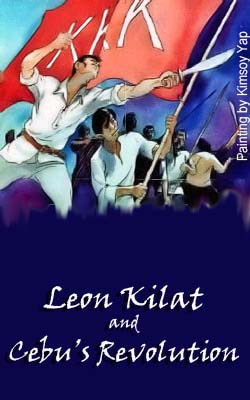
Recruitment and Beginnings
Arrival from Manila
The First Martyrs
Amulets and Anting-anting
April 3, Palm Sunday
Massing of Forces
First Encounter
Revolutionaries Gain Ground
The Retreat Begins
Betrayal and Death
Regrouping in the Mountains
Final Victory
The Author
Arrival from Manila
The First Martyrs
Amulets and Anting-anting
April 3, Palm Sunday
Massing of Forces
First Encounter
Revolutionaries Gain Ground
The Retreat Begins
Betrayal and Death
Regrouping in the Mountains
Final Victory
The Author
 THE Author wrote this piece while still an Assistant News Editor of The Freeman, the oldest daily in Cebu City, Philippines. This coincided with the centennial celebration of the Philippine Independence in 1998. It was serialized in the paper for 12 consecutive days, culminating on June 12, that year.
THE Author wrote this piece while still an Assistant News Editor of The Freeman, the oldest daily in Cebu City, Philippines. This coincided with the centennial celebration of the Philippine Independence in 1998. It was serialized in the paper for 12 consecutive days, culminating on June 12, that year.
The author wishes to thank the management and staff of the Cebuano Studies Center of the University of San Carlos, the source of books, monographs, typewritten accounts as well as Cebu's earliest newspapers where the first-hand accounts of participants in the 1898 Revolution appeared. These were mostly written in fluid Cebuano prose and poetry that were difficult to translate, as in the case of Enrique Maria de la Calzada.
Indeed, the temptation to use the original text was hard to resist. This explains why the accounts were detailed, and there is certainly no reason to doubt their accuracy. Since it was written for a newspaper, footnotes were out of the question. But these are kept in a safe place just in case there are questions about sources.
There is only one accurate source of Kilat's murder account - the person who witnessed the event. The political repercussions on local politics in Carcar are likewise depicted in several subsequent news accounts, but it would be another interesting research topic others might want to do.
The photos here are abundantly found in several sites in the internet. As for the paintings of Maxilom, the women flag makers and the Tres de Abril Assault, the author took pictures of them in an exhibit in 1898. These were done by Manuel Pa˝ares, a Cebuano artist.
For this writeup, The Freeman among all the community newspapers in the country was awarded the "Best in Historical and Cultural Reporting" by the Philippine Press Institute and the Konrad Adenauer Stiftung the following year it saw print.